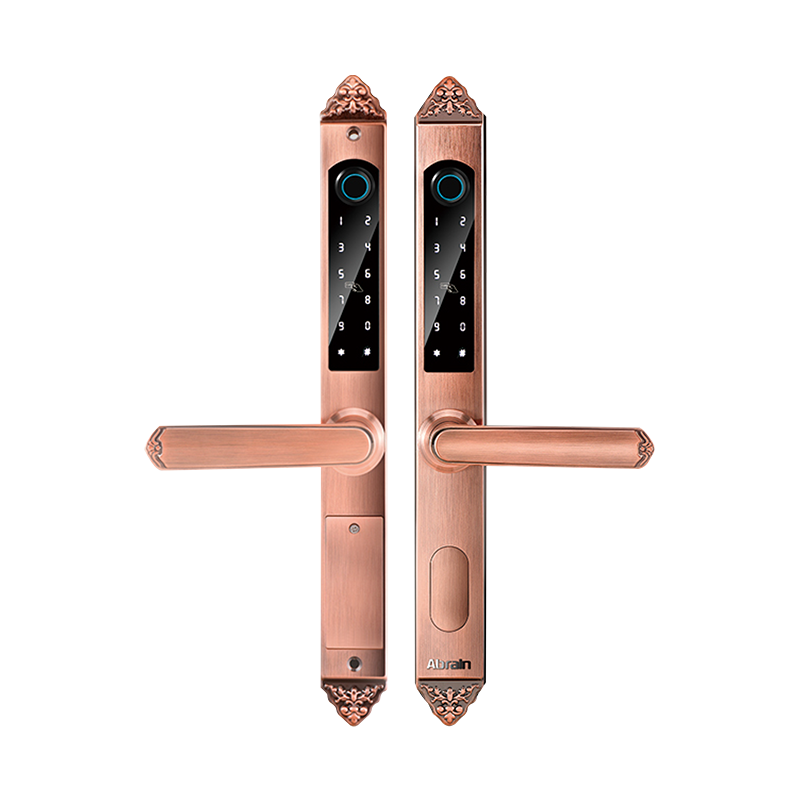Exploring the Versatile Applications of Double-Sided Fingerprint Locks
High Quality Double-Sided Fingerprint Locks Exporter Producer
A double-sided fingerprint lock is a modern locking system that utilizes biometric fingerprint recognition on both sides of the door or entry point. Unlike traditional locks, which require keys or combination codes, a double-sided fingerprint lock grants access only when it scans and matches the fingerprint of an authorized user on either side. This dual authentication method ensures that only individuals with pre-registered fingerprints can unlock the door, making it a highly secure and convenient option.

One of the key advantages of a double-sided fingerprint lock is that it does not require physical keys, which can be lost, stolen, or copied. It is also much harder to bypass than conventional locks, offering a higher level of security in both residential and commercial settings.
Home security is one of the important considerations for homeowners, and the double-sided fingerprint lock provides a significant upgrade over traditional locks. Installing this advanced locking system on doors into and out of the house ensures that only family members or authorized individuals can enter. Since it uses biometric data, the need for keys is eliminated, reducing the risk of unauthorized entry.
For households with multiple entry points or large families, a double-sided fingerprint lock offers convenience. With this lock, no more scrambling to find keys or worrying about misplacing them. Each member of the family can have their unique fingerprint stored for easy access, providing a more personalized level of security.
Furthermore, these locks are beneficial for homes with security-sensitive areas, such as safes or offices. By installing a double-sided fingerprint lock on these specific doors, homeowners can create a highly secure environment for valuables, ensuring only authorized individuals can access these spaces.
In commercial settings, security is crucial to protect sensitive information, equipment, and property. The double-sided fingerprint lock has quickly become a popular choice for businesses looking to enhance their access control systems. These locks can be installed in offices, storage rooms, and warehouses, where restricted access is essential.
One of the primary advantages of using a double-sided fingerprint lock in the workplace is the ability to track and monitor access. By linking the lock to an access control system, businesses can maintain a record of who entered or exited a particular area, at what time, and for how long. This level of monitoring is valuable for businesses concerned with security, particularly in industries that deal with confidential information or high-value assets.
Moreover, a double-sided fingerprint lock provides added flexibility in shared office spaces. It allows employers to create specific access profiles for different employees. For example, managers may have access to all areas, while other employees may only be granted access to certain parts of the building, improving both security and workflow efficiency.
The hotel industry has also found significant utility in double-sided fingerprint locks. Hotels can use these advanced locks to secure guest rooms, VIP areas, and restricted employee zones, providing an elevated level of security for guests and staff. Since fingerprints cannot be easily duplicated or stolen, double-sided fingerprint locks reduce the risk of unauthorized access to rooms, increasing guests' peace of mind.
For hotels, the convenience factor is also noteworthy. Guests can simply register their fingerprints upon check-in and gain access to their rooms without needing to carry a key card, which can easily be lost or forgotten. This streamlines the check-in process and enhances the guest experience by offering a more modern, secure method of room access.
Additionally, for hotel staff, double-sided fingerprint locks improve overall security management. Staff can be assigned specific access permissions to various areas of the hotel based on their roles. This reduces the chances of unauthorized access to sensitive areas, such as storage rooms or administrative offices.


